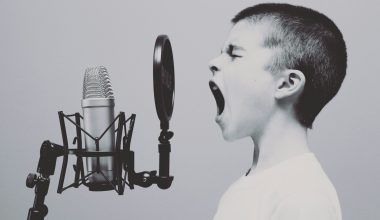If you’ve ever been a music fan, you might have come across the term “E.P.” and wondered, “What is an E.P. in the music industry?” Don’t worry; you’re not alone! This blog will break down what is e.p in music industry, why it matters, and how it’s used in the world of music. Let’s dive right in and explore this fascinating topic together.
Understanding the Basics of an E.P.
First things first, E.P. stands for “Extended Play.” It’s a music recording that contains more tracks than a single but fewer than a full-length album. Think of it as a happy medium between a short teaser and a full-blown project. Typically, an E.P. has about 3 to 6 songs and runs for 15 to 30 minutes. It’s perfect for artists who want to give their fans more than just one song but aren’t quite ready to drop an album.
Why Do Artists Release E.P.s?
Artists have many reasons for releasing E.P.s. For starters, they’re a great way to experiment with new sounds and ideas without committing to a full album. An E.P. lets musicians test the waters, gauge fan reactions, and see what works. It’s like a musical sneak peek!
Moreover, E.P.s are less time-consuming and expensive to produce compared to albums. This makes them ideal for independent or up-and-coming artists who want to showcase their talent without breaking the bank.
A Brief History of the E.P.
The concept of the E.P. has been around for decades. Back in the 1950s and 1960s, vinyl records were the main format for music. E.P.s were essentially shorter records that were cheaper and more accessible than albums. They became a hit among younger audiences who couldn’t always afford full-length records. Over time, as music formats evolved from vinyl to CDs and eventually to digital streaming, the E.P. also adapted but never lost its charm.
E.P. vs. Album: What’s the Difference?
You might be wondering, “How is an E.P. different from an album?” Well, the primary difference lies in the number of tracks and the overall length. Albums usually have 10 to 15 songs and run for 30 minutes to an hour (or even longer!). They’re considered major projects that require significant effort and resources. E.P.s, on the other hand, are shorter and more focused, often showcasing a specific theme or concept.
Another distinction is the purpose behind the release. While albums are often seen as definitive artistic statements, E.P.s are more flexible. They can serve as introductions for new artists, bridges between albums, or platforms to explore niche ideas.
How E.P.s Benefit Artists
For artists, E.P.s offer a host of benefits. Let’s break them down:
- Creative Freedom: E.P.s allow musicians to experiment without the pressure of creating a blockbuster album. They can play with different genres, collaborate with other artists, or explore new themes.
- Fan Engagement: By releasing an E.P., artists can stay connected with their audience between albums. It keeps fans excited and engaged without long gaps in new music.
- Cost-Effective Production: Producing an E.P. requires fewer resources than an album, making it a smart choice for artists working on a budget.
- Market Testing: E.P.s can help artists test new material and see how their audience responds. This feedback can guide future projects and creative decisions.
How E.P.s Benefit Fans
It’s not just artists who love E.P.s; fans appreciate them too! For one, E.P.s offer a concentrated dose of an artist’s creativity. They’re easy to listen to in one sitting, making them perfect for busy days. Plus, E.P.s often feel more intimate and personal, giving fans a closer look at an artist’s journey.
Famous Examples of E.P.s
Many iconic artists have released E.P.s that became pivotal in their careers. For example, The Beatles’ early E.P.s helped establish their popularity in the UK. More recently, artists like Billie Eilish and The Weeknd have used E.P.s to build momentum before releasing full-length albums. These projects often contain hidden gems that become fan favorites.
The Role of E.P.s in the Streaming Era
In today’s music world, dominated by platforms like Spotify and Apple Music, E.P.s have taken on a new significance. With shorter attention spans and a focus on singles, E.P.s strike a balance between giving listeners more content and keeping it digestible. They’re also great for algorithms, as releasing new music frequently can boost an artist’s visibility on streaming platforms.
How to Create an E.P.
If you’re an aspiring artist, creating an E.P. can be a rewarding experience. Here are some tips to get started:
- Choose a Theme: Decide on a central idea or mood for your E.P. This will help tie the songs together and make the project cohesive.
- Pick Your Best Tracks: Since an E.P. is short, every song needs to shine. Focus on quality over quantity.
- Work with a Producer: Collaborating with a producer can elevate your sound and bring your vision to life.
- Plan Your Release: Consider how you’ll promote your E.P., whether through social media, live performances, or music videos.
- Engage Your Audience: Use your E.P. as a way to connect with your fans. Share the story behind the songs and invite listeners into your creative process.
The Future of E.P.s
Looking ahead, E.P.s are likely to remain a vital part of the music industry. As technology continues to evolve, so will the ways artists create and share music. But one thing is certain: the E.P. will always hold a special place in the hearts of musicians and fans alike.
In conclusion, an E.P. is more than just a collection of songs. It’s a snapshot of an artist’s creativity, a bridge between past and future projects, and a way to connect with listeners on a deeper level. So, the next time you hear about an E.P., you’ll know exactly what it is and why it matters. Happy listening!
For further reading, explore these related articles:
For additional resources on music marketing and distribution, visit DMT Records Private Limited.






